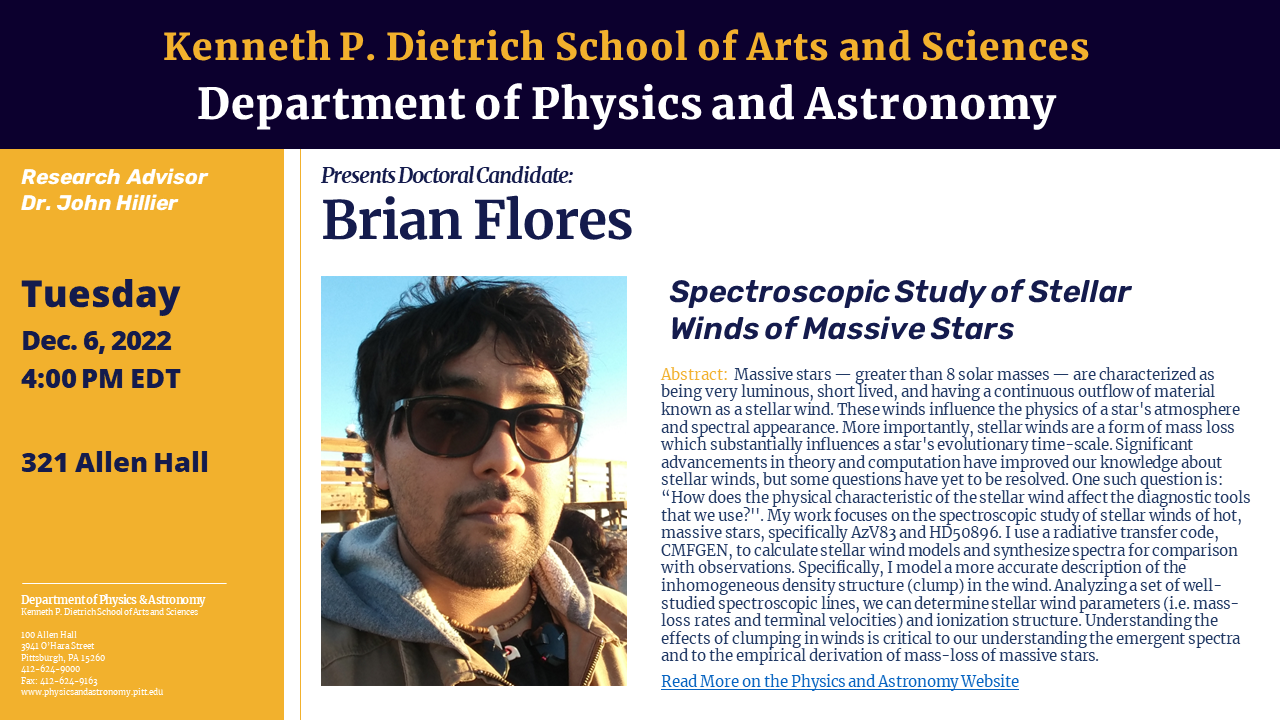PhD Defense: Brian Flores
December 6, 2022 - 4:00pm
Spectroscopic Study of Stellar Winds of Massive Stars
Massive stars -- greater than 8 solar masses -- are characterized as being very luminous, short lived, and having a continuous outflow of material known as a stellar wind. These winds influence the physics of a star's atmosphere and spectral appearance. More importantly, stellar winds are a form of mass loss which substantially influences a star's evolutionary time-scale. Significant advancements in theory and computation have improved our knowledge about stellar winds, but some questions have yet to be resolved. One such question is: “How does the physical characteristic of the stellar wind affect the diagnostic tools that we use?''. My work focuses on the spectroscopic study of stellar winds of hot, massive stars, specifically AzV83 and HD50896. I use a radiative transfer code, CMFGEN, to calculate stellar wind models and synthesize spectra for comparison with observations. Specifically, I model a more accurate description of the inhomogeneous density structure (clump) in the wind. Analyzing a set of well-studied spectroscopic lines, we can determine stellar wind parameters (i.e. mass-loss rates and terminal velocities) and ionization structure. Understanding the effects of clumping in winds is critical to our understanding the emergent spectra and to the empirical derivation of mass-loss of massive stars.
Location and Address
321 Allen Hall
Hybrid pitt.zoom.us/j/96857521825
